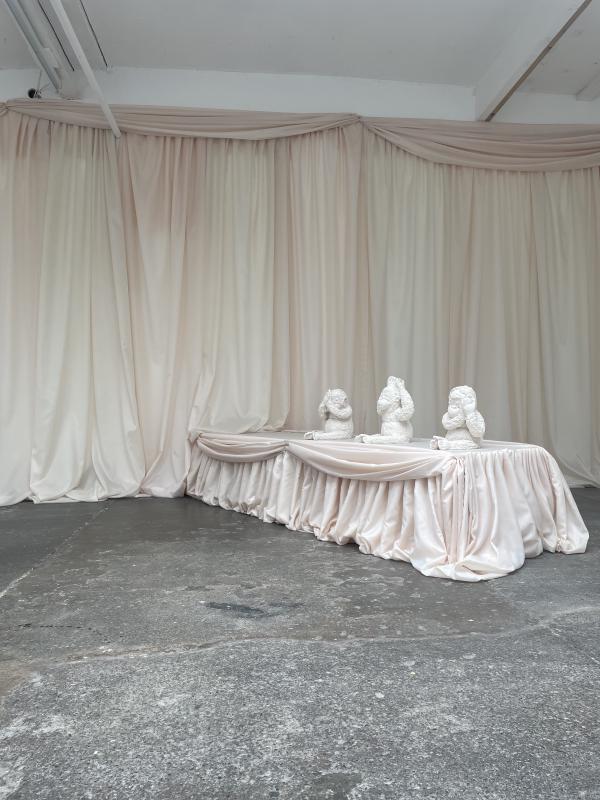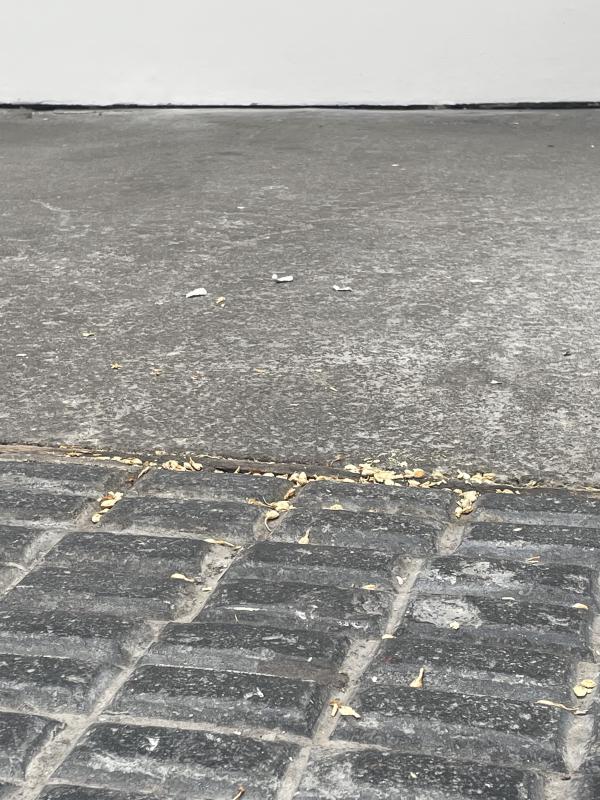Sincere Seeker
ZM
‘We perpetually grow habituated to everything around us’. That is how Danielle Dutton describes the argument in Victor Shklovsky’s essay Art as Device, in her own essay A Picture Held Us Captive. After being perceived a couple of times, an object acquires the status of being RECOGNISED. In recognition, the object disappears (or we know it’s there so we just stop looking at it, and so it disappears to us). It exits the realm of our perception. Dutton (and Shklovsky) use the word HABITUATION. ‘Habituation devours work, clothes, furniture, one’s wife, and the fear of war’. It is a kind of obliteration, the objects that exit the realm of our perception then cease to really exist. (Dutton says that) Shklovsky argues that ‘the job of art is to make the world strange so that we might see it again’. Art does this through a process (according to Dutton) Shklovsky calls defamiliarisation, or estrangement.
There is an interesting fundamental belief underneath Habituation and Estrangement: we are central to the world and its existence. Our perception makes an object real (& unmakes an object’s reality too). It frames perception as a kind of power, a benefaction we bestow on unsuspecting passive objects. It sets out two possibilities for the object: the familiar and the strange. It sets out a passageway between the two states. Strange > familiar (this is habituation). Familiar > strange (this is estrangement). Yes, there is the familiar (the known, the understood, the habitually recognisable, the therefore invisble) and the strange (the unknown, the un-understood, the therefore visible). Maybe to see something (to really perceive it) is to not understand it, maybe seeing is the encountering of secrets. Maybe this is what Glissant called Opacity. Maybe the familiar is invisible and the strange is a secret, so the world is actually made up of things that are invisible, things that are secret and things we have not yet encountered (and therefore not yet categorised as invisble or secret).
AAAAAAAAAH!! AAAAAAAAAH!! AAAAAAAAAH!! AAAAAAAAAH!! AAAAAAAAAH!! AAAAAAAAAH!!
Many other critics are many other things. But if I am a critic, my critical-self is critic-as-idiot. When some people write, they seem to make complicated concepts simpler and clearer. When I write, I seem to turn simple things into great tangles. I can’t seem to say: AS WE GET USED TO THE THINGS AROUND US, THEY DISAPPEAR! I have to say: DANIELLE DUTTON SAID VICTOR SHKLOVSKY SAID XXX AND I THINK XXX because the journey feels like half the point. Simpler and clearer makes the story disappear. As I write, concepts inflate around me. They get stranger. I make choices with my subjects: I take something familiar, I write about it as if it is unfamiliar, as if I am encountering it for the first time, as if I am a baby or an alien and it is brand new. There are interesting fundamental beliefs underneath these choices: unfamiliarity and strangeness is a position you can take up or a register you can slip into. This state of strangeness makes it possible to see things again, sure. It also opens up conceptual synapses, in strangeness it’s possible to make connections and meanings that would not have come about in a state of familiarity. So I prepare my subjects for connection and meaning by making them strange. I do not make things clearer. I back myself into a corner, where I don’t know what I’m referring to anymore.
When I was a child I would repeat words over and over and over to myself until they became strange. Through repetition, the word-iness of the word floated away, the word stopped being a word, the word became a sound. We can try it now, together, out loud. Say: ORANGE quickly ten times. orangeorangeorangeorangeorangeorangeorangeorangeorangeorange. Even reading it on a page, the word ceases to be legible as a word (at first glance). It becomes a string of letters (sounds) (shapes you are making with your mouth). You start to think about how strange it is, that you’re doing those shapes those sounds with your mouth. You start to ask why. You can make any shape, any sound — is this the shape, sound that feels best in your mouth? How does this shape, sound feel? Say ORANGE again, but this time say it slow. Stretch it out, make it all on purpose, pay attention to the shape and the sound. Oooooooooooooorrraaaaaaannnnnnngggggeeeeeeeeee. As a shape, a sound, it ceases to be a word, ceases to have meaning. It no longer refers to colour and fruit, it now refers to shape and sound. It has been recalibrated, estranged.
You can apply this focus to anything, not just words or objects. You can do it to whole entire people. Sometimes I look at my boyfriend and think you are a man and you are over there and you are a different person to me and you have a great big heart pumping blood around your body under your skin and a brain in your head that thinks thoughts and I can kiss your skin and your head but I am shut out of the internal workings that pumps blood round your body and sends out thoughts and he becomes strange to me. The newspapers and politicians do this with whole entire groups of people who arrive in our country, just by using certain words, they estrange them from us. They make us feel as if these are not people (exactly as we are people), they are strange and different, and in this strangeness it is possible to make connections and meanings that wouldn’t have come about in a state of familiarity. It can blow all sorts of ways, this recalibration, this estrangement.
Which is all very interesting, but the point is: estrangement is a quality that can be administered to objects, environments, words, people, things. Repetition is a way of administering estrangement.
Nicola Singh’s Sincere Seeker at Cubitt is made up of: sculpture and sound. The sculpture is: the far wall is modestly covered in rippling cream and baby blush pink fabric. There is an abundance of fabric, a birthday-cake-expanse. A catwalk stage peeks out at an angle, with three jesmonite casts of cuddly monkeys. The monkeys are plaster pale, solid and heavy or hollow like piggy-banks (I can’t decide), sat cute and stuck. Hands over their ears, eyes, mouth. The sound is: the artist improvises vocal mark-making. The essay on the handout (Empy Vessel by Gautam Pemmaraju) lists the components. A durational performance of the Sanskrit mantra soham, ‘a nominal sentence’ that translates to ‘That Is I’ or ‘I Am That’ —inhale SO, exhale HAM. Esoteric chanting of the Sanskrit alphabet, a way of locating energies in relation to the subtle body (the quasi-material astral body, auras, chakras, channels, energetic breath). Isolated subtle strains of Natural Mystic, a song by Bob Marley and the Wailers. These three tracks are layered up into a shimmering block of sound.
I sit opposite the scene, on the gallery’s concrete floor in a puddle of dried jasmine flowers. My back is straight, against the wall. I am breathing deeply into my stomach. I am listening to this rippling wave, I am looking at the monkeys in their birthday-cake-expanse, repeating sound over and over and over, energetic location or estrangement. I am looking so intently, with such focus, that something opens up, a conceptual synapse, some new meaning between sound and sculpture. Depth disappears, this is all I can see, they get tangled. I no longer know what I am looking at. Plaster pale, monkey gods, the sound, spinning. I am lost in it, swimming through. It blows all sorts of ways, nonsensical and recalibrated, brand new. And now, I can really see it.

